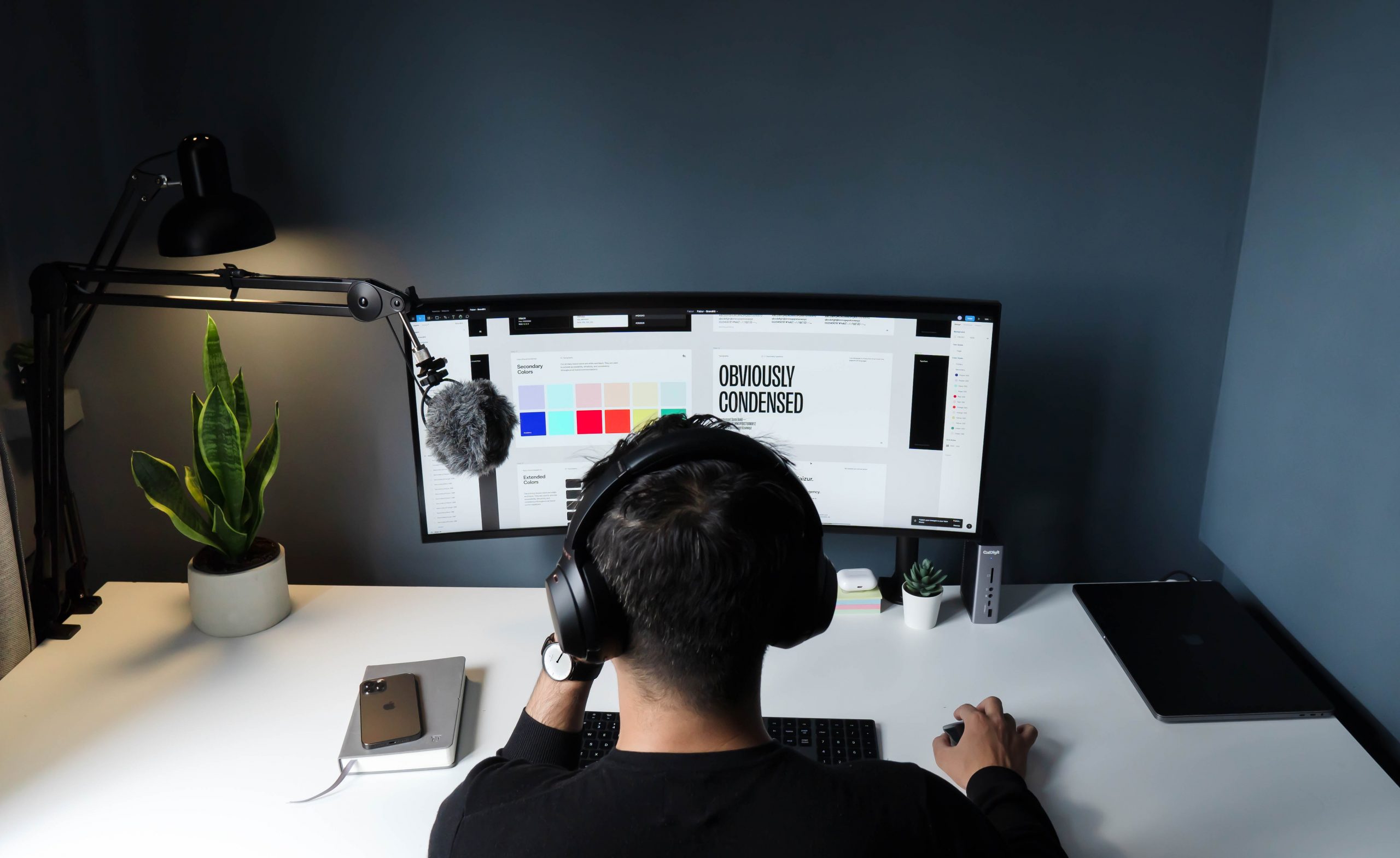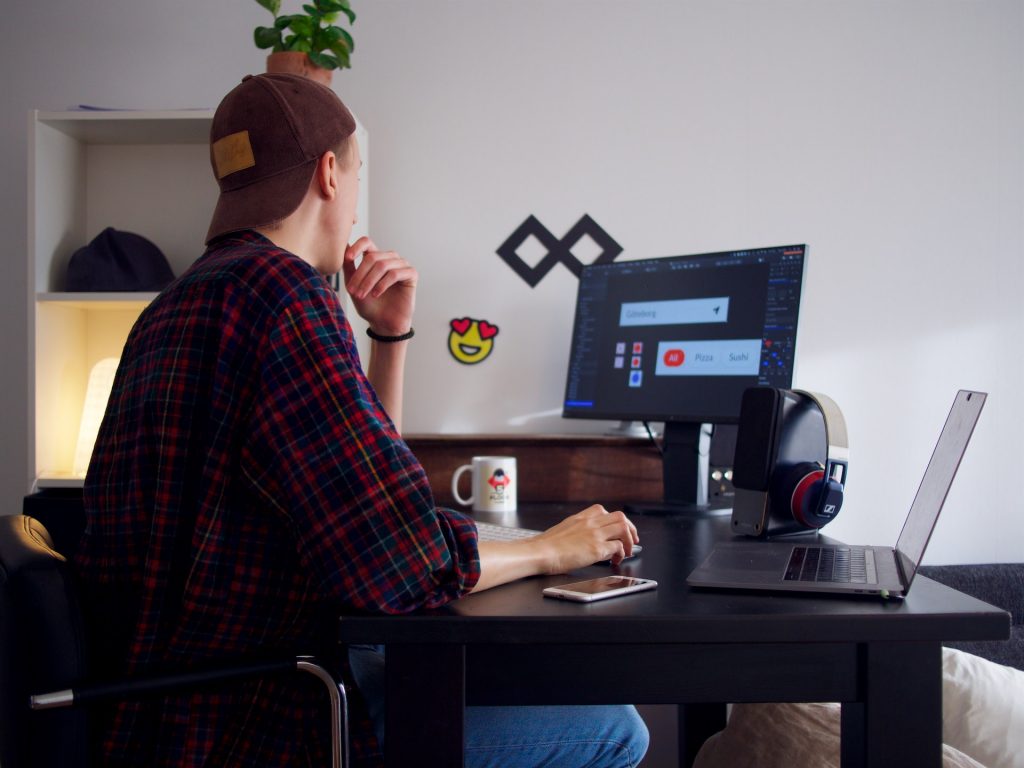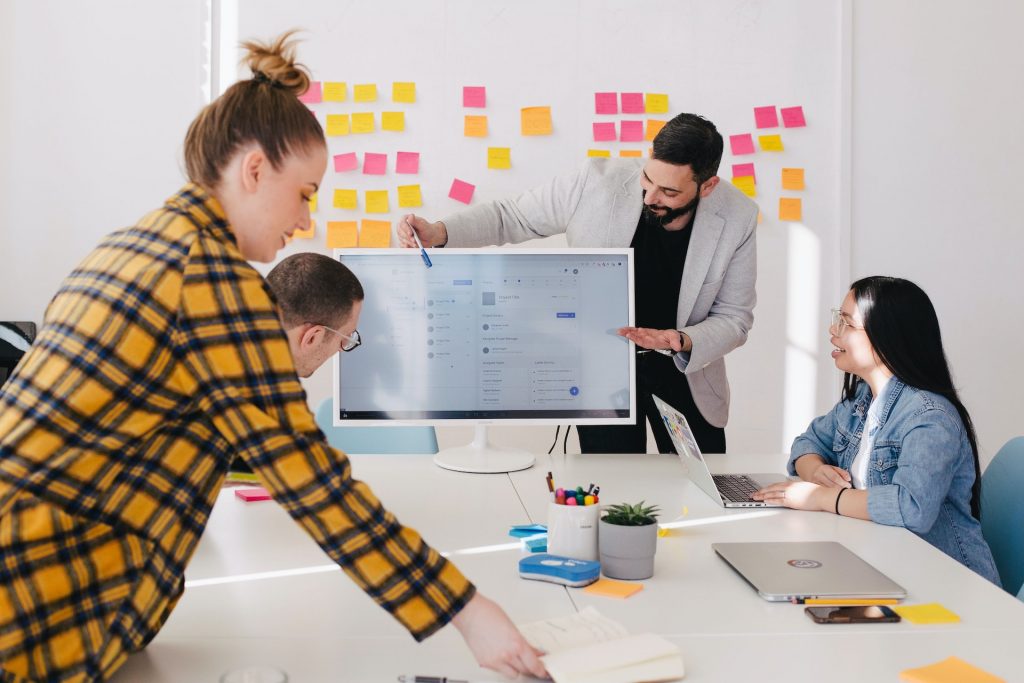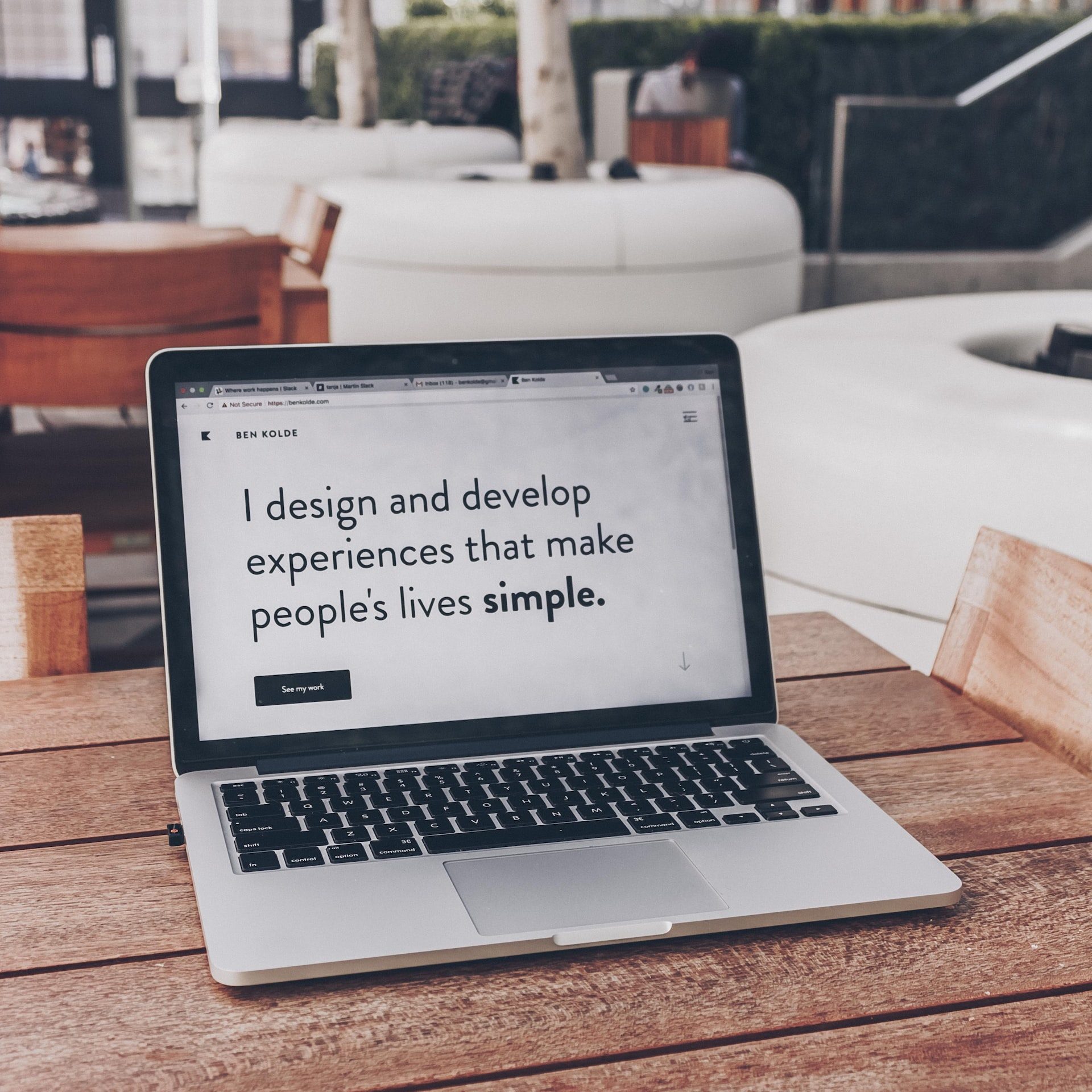
Why Comparing Designers Isn’t Always An Apples To Apples Comparison
Jerry Wallis
14 min read

As a business owner, you may feel pressure finding the perfect designer for a project. You may have already evaluated numerous portfolios and talked extensively with clients. But, at this point, you’re probably still left wondering which one has the right mix of creativity, technical abilities, pricing and service level that suits your company’s needs.
The challenge is not just choosing between designers – it’s also understanding precisely what they can do differently to bring value since comparing them often means comparing apples to oranges!
Getting the design right is probably the most important piece of the puzzle if you’re ready to take your business to the next level with a new website. Even if you’re creating an entirely new site from scratch or looking for a designer to revamp an existing one, many critical decisions are ahead. Choosing who works on this project is one of the most important; their work will determine how well you perform as a brand digitally and your overall customer experience.
Fortunately, we have some tips on making the process smoother so read on if you’re ready to give yourself peace of mind in finding the ideal designer partner for your next digital project. But before you dive into finding that perfect solution for the job, be it a freelancer, an agency or hiring an in-house designer, let’s talk about why comparing designers, in general, isn’t like comparing apples with apples.
Comparing Design Agencies – Why It’s Not Like-For-Like? ⚖️
Comparing designers can be tricky because styles and creative techniques vary widely, even among professionals operating in the same industry. When comparing web designers, there are many differences in their skill sets and experience to consider.
For instance, two web designers may have very different approaches to finding inspiration for their designs; one might prefer digging around modern trends to develop concepts, whereas another may base their strategy on research and business analysis.
Another example to drill this down is that while one designer may have years of experience creating beautiful and functional websites, another may have just started but offer a unique range of innovative ideas.

So it’s better to compare their portfolio of work and previous customer reviews and their project management systems, meeting procedures, and timescales for job completion.
But even more importantly, ensure the chosen designer understands your specific business needs and goals to tailor the result for your end users. By comparing a variety of web designers with an open mind and curious eye, you will surely find the right fit for your next project.
When comparing designers, it’s also essential to remember that the final product will differ significantly depending on subtle differences in vision and techniques. Because of this complexity, comparing designers’ creations like-for-like is very difficult and can take a lot of time and effort if at all possible.
Why Are Designers Difficult To Compare? 🤷♂️
When it comes to web and software design, comparing designers can often be like comparing apples and oranges. No two designers are the same — each brings their unique set of knowledge, skills, preferences, processes and experience.
It’s not just a matter of who’s more experienced, understands coding, or is adept at a particular design software. It mainly boils down to what creative inspiration each designer brings, their approach to design, their tools, and their unique style and creative vision.
So, if you’re comparing designers solely on their abilities and skillsets, then you’ll fail to do it properly in an objective manner. That’s why when selecting designers, base your decision on the scope, complexity, and technical requirements that make more sense than delving deeper into their design insight to determine which best fits your project vision.
Furthermore, when it comes to design, a lot goes into it, from the theoretical understanding of the science and processes to the practical application of user research, methodology, and brainstorming. And, when you factor in experience and natural design aptitude, it shows how difficult it truly is to assess designers by a single metric objectively.
Does Higher Cost Mean A Better Design? 🤩
Great designers put out great creative design concepts, while average ones struggle and fumble their way over the finish line. Comparing designers objectively is a tall order because design in it itself is a subjective science at the end of the day and, thus, fails to fall into an objective comparative system.
So, why do we base so much of our decision-making on pricing and finance? For instance, you can’t just go and say design me a logo for $50 and expect great work. You can’t put a price tag on a creative discipline like design.
The point is that great designers cannot be compared in dollars and cents. For example, when comparing a $1k design with a $50k design, you’d expect the $50k version to be a lot more intuitive, creative, and better as a whole. However, this may not always be the case, and spending more money on design doesn’t always guarantee a better output. It can and often does, but not always.
💸 Why Is Design Expensive?
This brings us to the next point in the agenda: why do some design agencies charge more than others? While it might be difficult to realise on the surface, better design companies who charge more usually provide additional value aside from the agreed-upon design deliverables.
For starters, most top design firms provide clients the following bonus services during collaboration:
- Access to 24/7 support
- Marketing strategy and guidance
- Further branding expertise
In addition to this, when partnering with high-quality design firms, you can also expect more background research and a detailed project scope.

Working with a branding agency steeped in history and tradition can be costly, yet it tends to be worth the extra expense. With decades of know-how behind each project, you can trust these experts to bring out their unique identity through design expertise beyond compare! Essentially, you’d be paying a premium for the decades of accumulated knowledge, credibility and trust in the industry.
We’re not insinuating that you must spend more to get better design because most businesses have financial limitations restricting their investments. Therefore, in such cases, try to find the best agency or design solution that falls within your budget, but the principles discussed in this article should help you make your selection.
What Goes Into The Web Design Process? ⚙️
The design process varies from designer to designer and from agency to agency. Different approaches, tools and techniques are used by each designer, as every individual has their way of crafting creative works of art.
For instance, our design process includes an in-depth scoping and strategy phase followed by requirements gathering, and only after that does the actual design process commences. We put a lot of effort into strategising, and prior project documentation because designing web and software applications involves analysing the needs of potential users, understanding how to create an efficient user experience, and incorporating all relevant details, such as branding elements and content, into a solid visual design package.
Most modern digital design processes require in-depth technical aptitude to understand web technologies and a creative vision to compose successful designs. Combining knowledge and skill in web technologies and aesthetics enables web designers to develop functional strategies that meet their client’s goals.
When choosing designers, find out how each uses up-to-date trends, styles and references to refine their designs before finalising the design process. Analysing and comparing different design processes can open up new possibilities of thinking or help ignite creative thinking when approaching a brief.
In a typical design framework, designers engage in the following:
- Researching,
- Strategising,
- Developing,
- Proposing,
- Iterating, and
- Producing a product that meets the client’s specific needs.
The process often begins with a consultation with the client. Design agencies determine their client’s exact needs to develop a design blueprint that is best suited for their project. Once the design plan is finalised, designers will begin designing per established standards and follow systematic protocols accordingly.
This includes creating visuals from design mockups followed by prototyping which will form the base for code drafts ensuring quality control and accuracy throughout the development stage.
How To Find The Ideal Design Resource For Your Business 🔎
If you’re looking to take your business’s digital presence up a notch and deliver truly phenomenal customer experiences, finding the ideal design resource for the job is essential.
To ensure you get the most out of your project, begin by assembling a list of designers with experience creating websites that match your specific needs.
Make sure their portfolio reflects the types of designs that match your expectations to ensure quality and alignment with your project vision. Additionally, investigate their communication and collaborative processes: do they involve their clients in feedback loops and make time for project reviews? What is their design process?
Do thorough research into agency portfolios and customer service practices to help you narrow your search and find the design partner who will meet your demands and exceed your expectations.
Furthermore, make sure any web design company you’re considering specialises in web design first and foremost and has an experienced team with diverse technical backgrounds. If possible, try to talk to their previous clients and ask questions about their experiences.
Once you’ve narrowed down your list, take some time to review each agency’s portfolio and determine which one has the style you need for your business site. Then, with diligent research and a thorough vetting process, you’ll be able to find an experienced web designer who can create a platform that meets all of your needs.
Make no mistake, finding a web designer for your business can be challenging and time-consuming, but with proper research, you can find the web designer who best suits your company’s needs.

🎯 Three Takeaways
Step 1: To keep things simple, ensure your web designer understands the purpose of your web project.
Step 2: Review portfolios to understand different web and software designers’ styles.
Step 3: By taking into account the location, rates and references, as well as considering their portfolio samples, you can make more informed decisions regarding which web designer best fits the vision for your business. When interviewing designers, focus on understanding their approach to web-based solutions and their work ethics to find the ideal designer for your business.
What Makes A Great Web Designer? 👨💻
Different people may have different opinions on what makes a great designer. For example, some might argue that the best web designers are technical whizzes who know the latest design software inside out and have a good handle on web development as well.
However, others may contend that professional communication skills and a natural flair for finding creative solutions to intricate problems are more critical.
While the truth lies somewhere in between, this is ultimately an individual decision, which means it’s up to each designer to decide which approach and what tools they will use to prove their worth within the industry.
One thing, though, is true – great designers have something in common with great entrepreneurs: attention to detail, the ability to think outside the box and an unwavering commitment to excellence.
💐 Appreciation For Functional Aesthetics
What sets excellent design agencies apart from average ones is their appreciation for beauty and functional aesthetics. A great designer understands that visually appealing design isn’t just about looking good to the eyes; it’s about creating something worth keeping.
Their designs are rooted in aesthetic pleasure but also functionality and relevance. They take the utmost pride, have complete confidence in their work, and aren’t afraid to compare themselves to their peers, always striving for improvement.
Great designers create works of creativity that stand out from the pack and will be remembered by people long after they are gone. With a drive to innovate, they bring innovation into everything they do and never settle for mediocrity.
👨🔧 Unwavering Customer Service
Great design agencies set themselves apart from their competitors through their ability to turn customer feedback and expectations into a reality. They can quickly compare various design ideas, identify the best one, and create a product that perfectly meets the customer’s needs.
🤝 Fulfil Promises And Expectations
Nothing speaks unprofessional louder than missed deadlines and false promises. Fortunately, when partnering with a great design agency, you won’t have to worry about this.
Unforeseen difficulties can bring even the most carefully laid project plans to a screeching halt- but it doesn’t have to be this way. To avoid frustration, look for a web design firm that sets clear deadlines and communicates any potential issues upfront, so you’re always in the loop!
At the end of the day, successful projects rely on an honest dialogue between the designer and the client.
⚠️ Attention To Detail
Great design agencies take pride in their impeccable attention to detail and understanding of the latest digital design trends, even when working on more functional and technical concepts, allowing them to push boundaries while still creating something tangible and usable that’ll ultimately serve your customers with rich purchasing and digital navigational experiences.
🧠 In-depth Expertise And Knowledge
Great designers have powerful problem-solving skills, enabling them to identify and resolve any issues that arise during the development process.
Design agencies with highly skilled designers are well-versed in their craft’s latest tools and technologies. They soak up new insights by participating in seminars, fostering conversations on forums and groups online, or taking part in educational video calls – allowing them to stay current with best practices to deliver first-class results for every project!
To summarise, all of these unique traits combine to enable designers to create incredible interfaces that provide real value and a holistic user experience for their customers.

Conclusion: Putting It Altogether 📋
As a business owner, it’s essential to understand that not all designers are created equal. Therefore, when comparing quoted pricing, keep at least the following in mind: their experience level, services offered, and design processes.
By taking the time to understand what goes into each quote, you can be confident you’re making the best decision for your business – even if it means paying a little bit more.
So many designers are available for hire that it can take time to decide. However, by taking the time to understand your needs and what you’re looking for in a designer, you can find someone who is the perfect fit for your project.
Remember that when comparing apples with oranges, you will get an inaccurate picture of what you need. So be sure to compare like-for-like when considering different designers. Otherwise, you might end up hiring someone who isn’t suitable for the job.
When we say like-for-like, don’t use a single objective metric like pricing as your sole decision-making factor; instead, study and analyse the body of work, reputation and accomplishments of the shortlisted options, and move towards your final decision from there.
Recently, the Manifest, a company-listing platform, recognised WEBO Digital as one of the most reviewed web design agencies in Sydney, Australia. We take pride in what we do for our clients, and our one and only goal is to empower their businesses by delivering exceptional customer experiences by leveraging technology to the fullest.
In the end, everyone’s got their process, and you can only learn so much about a person by reading their portfolio or chatting over email. So, if you’re interested in finding the right partner for your project, then book a discovery call with us. We’ll discuss your project in detail and answer any questions. No hard sell, just authentic and helpful information so you can make an informed decision about working together.
Topics
Published On
December 22, 2022

